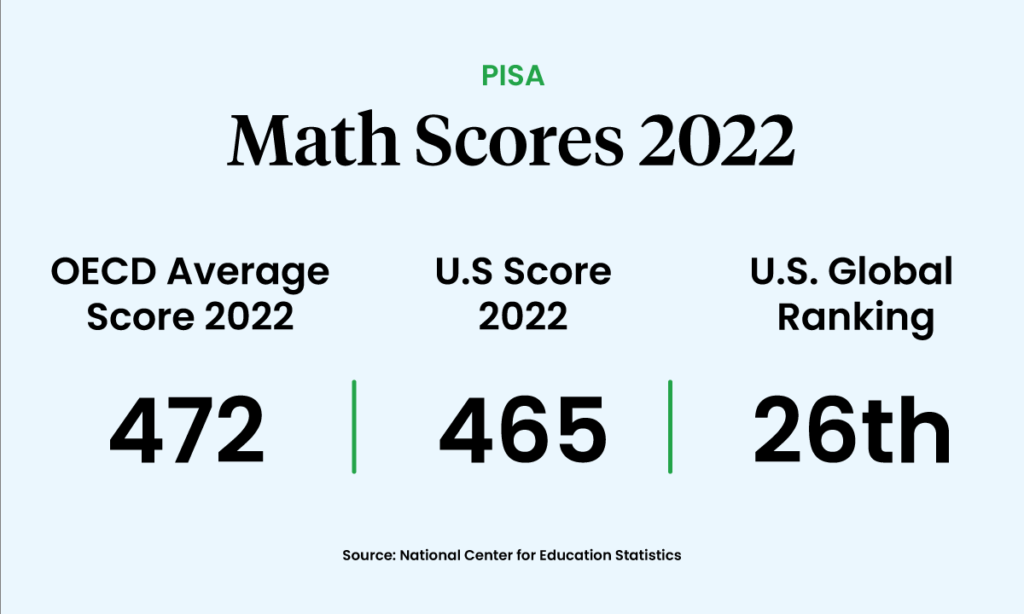
If Legislators Care About Equity They’ll Pass This Bill–and Murphy Will Sign It
December 5, 2023
Camden Education Fund Provides $10,000 for 2023 Black Men in Education Convening
December 6, 2023New Jersey Now Knows Its State Math Tests Are Accurate Reflections of Student Learning
For the first time since the COVID-19 pandemic, students in 81 industrialized countries that form the Organization for Economic Co-operation and Development (OECD) took a test called “Program for International Student Assessment,” also known as PISA. Students were tested in reading, math, and science. How did American kids do? Dale Chu helpfully gives us a list of headlines from today’s press coverage:
“U.S. students’ math scores plunge in global education assessment” (Axios)
“Math scores dropped globally, but the U.S. still trails other countries” (New York Times)
“Learning loss hits the U.S. hard. It’s as bad or worse across the world.” (Wall Street Journal)
“Math scores for U.S. students hit all-time low on international exam” (Washington Post)
For context, PISA is given every three years to a representative group of fifteen-year-olds, with an emphasis on real-world skills. While many countries saw declines due to pandemic school closures, few showed the same decrease in math skills. In fact, one in three American students scored below “basic” in math proficiency, the lowest score.
From the New York Times:
“I don’t think you can drop much lower,” said Andreas Schleicher, the director for education and skills at the O.E.C.D., which oversees the exam. “You don’t want to compare the U.S.” to less advanced economies, he said.
According to the PISA findings, in all OECD countries socio-economic status was a predictor of performance in mathematic, accounting across the world for 15% of the variation in mathematics performance.
This year PISA polled students on how they felt about school closures
- In the United States, 64% of students reported that their school building was closed for more than three months due to COVID-19. On average across OECD countries, 51% of students experienced similarly long school closures.
- In education systems where performance remained high and students’ sense of belonging improved, fewer students experienced longer school closures.
- During remote learning, 44% of students in the United States had problems at least once a week with understanding school assignments and 28% of students with finding someone who could help them with schoolwork (OECD averages: 34% and 24%). In education systems where performance remained high and students’ sense of belonging improved, fewer students encountered problems during remote learning.
In reading, American students now rank 6th and in science we rank 10th. Analysts attribute the improvement in these two subjects to harsher pandemic slides in typically-top ranking countries like Finland, Norway, and Iceland.
Let’s get local: when the New Jersey Department of Education presents results on Wednesday December 6th on the state standardized tests from spring 2023, we’ll find out that 18% of eighth-graders met proficiency standards in math. In 2019 (the last pre-pandemic testing window), 68% of eighth-graders met proficiency standards.

(Graphic from The 74.)




